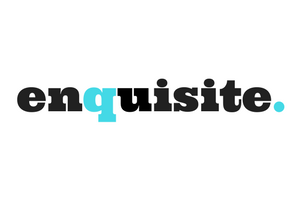IMAGE SOURCE: Pixabay.com
In a world of e-commerce and unlimited options for shopping, it may come as a surprise that traditional advertising is still king. Total global spend advertising has already hit an all-time high this year of $1.4 trillion. Of this staggering sum, only a mere 13% was actually spent on social media, with the lion’s share going on old-fashioned video commercials, primarily destined for TV broadcast.
The reason for this is simply that a memorable TV commercial still has the potential to attract attention and snag lifelong customers. That’s why companies of all stripes are continuing to invest big bucks in producing the highest-budget, iconic adverts on the airwaves, often spending tens of millions of dollars on a single campaign.
One TV advertising trend that has consistently managed to grab attention and generate headlines over the past decade is the appropriation of classic movies to create truly unforgettable commercials. There have been some stellar examples in recent years, often involving the use of video editing to incorporate a product into an iconic movie scene.
If you want to see the best examples of this in action and find out more about why advertisers swear by this tactic, read on.
Masters of the Genre: The Film 4 Rebrand
One of the cleverest uses of this advertising tactic in recent memory is the 2014 ad campaign by the UK studio Film 4, as part of a publicity effort to announce their branding overhaul. The campaign consisted of merging iconic scenes from Hollywood films, whilst incorporating the Film 4 logo into the background. For instance, their best-known clip opens with a shot of the ominous hotel corridor from The Shining, then goes on to make the corridor flip upside down and have all of the objects float in mid-air in a nod to Inception.
Similarly, a shot of the forest from the vampire movie Twilight, complete with running werewolves, quickly transforms into the campsite from the Wes Anderson classic film Moonrise Kingdom. It’s a genius way of triggering instant recognition from the audience whilst also ensuring that the viewer clearly knows what is being advertised.
The Wizard of Oz in Advertising
Rather than using as many classic movie scenes as possible, some advertisers prefer to stick with just one film, often one that is so iconic and versatile that it can be used for virtually any campaign. A textbook example of such as film is the 1939 film The Wizard of Oz, which has been used in countless unforgettable ad campaigns over the years. One of these is the widely feted commercial for the British bank Halifax, which cleverly edits footage from one of the final scenes so that Dorothy and the Gang are actually looking for a mortgage.
Similarly, the delivery company FedEx used some digital trickery to incorporate their vans in the famous munchkin scene from the film, to highlight how FedEx can delivery anywhere, even over the rainbow. Part of this film’s popularity in advertising relates to its sheer versatility, as it lends itself to countless interpretations. Even in the tech-savvy world of online gaming, digital platforms such as Betway Casino continue to exploit the movie’s fame with their popular Book of Oz slot game. On the other side of the spectrum, there’s a burgeoning Oz fashion industry, with online retailers such as RedBubble offering entire clothing lines inspired by the imagery from the film. This goes on and on.
Volkswagen and Singing in the Rain
Sometimes there is a commercial that used a classic film so well that no other companies would eve dare to replicate it. One such example is undoubtedly the 2005 Volkswagen commercial that uses footage from the classic dance scene in Singing in the Rain, with the title track being remixed for a more modern sound. The commercial immediately went viral around the world, despite airing almost 15 years ago.
Since then, it regularly pops up on rankings of the most iconic adverts ever produced. If a commercial is so popular that everyone who was alive to see it can still remember it, you’ve done something right. It’s the seamless merging of one of Hollywood’s most beloved scenes and a modern product that makes this one stand out as a lesson for all advertisers in the future.
As you can see, taking inspiration from the classics when marketing your products is not only acceptable, it can be a winning strategy. All you need is some good movie taste and a knack for editing, and you could have a hit on your hands. And have you ever thought about using graffiti in your ads…?











